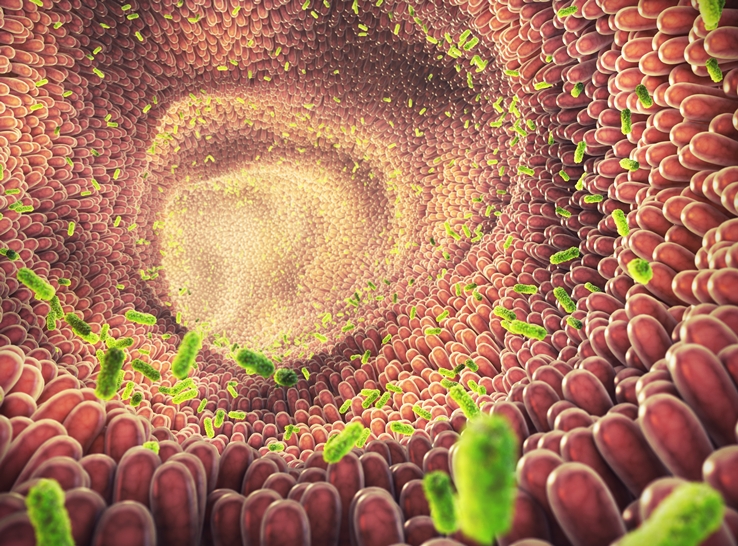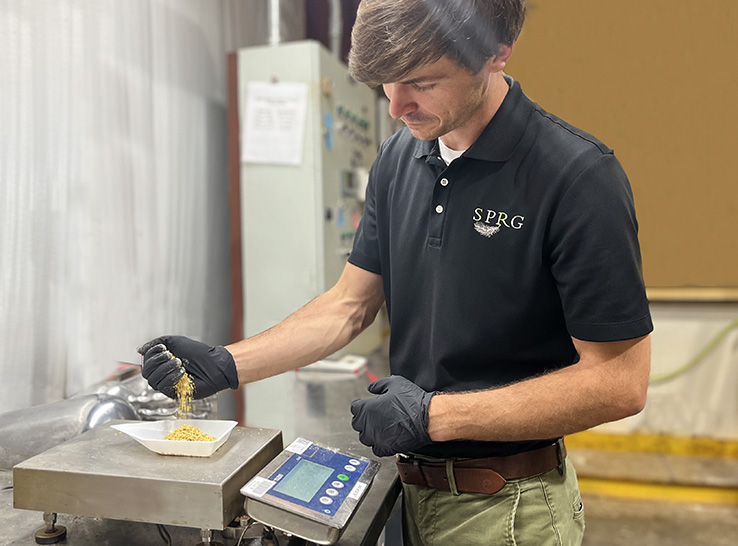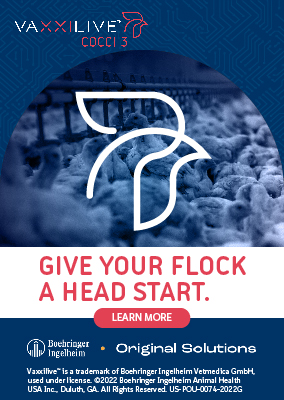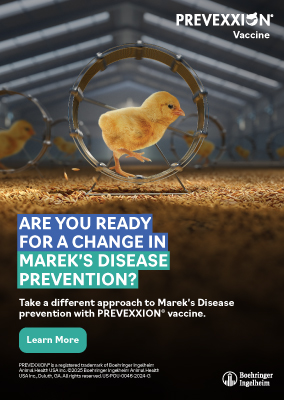 Is diet the rising X factor for optimizing immunity in poultry?
Is diet the rising X factor for optimizing immunity in poultry?
Researchers at the Southern Poultry Research Group (SPRG) in Athens, Georgia, are building a strong case, via a growing body of research shedding new light on how diet (i.e., feed and additives) influences the traditional pathogen-host-environment triangle for assessing disease risk.
“Diet can have a very substantial impact on disease risk in poultry,” says Matthew Jones, DVM, PhD, at SPRG.
“The extent of this dietary influence on disease risk is an area that has been only lightly explored compared to other factors. As we gain insights, this presents new opportunities to use dietary interventions to improve our poultry production strategies for reduced disease risk, greater efficiency and higher profitability.”
Additional factor to disease-risk triangle
Citing work from one of his professors at the University of Georgia, Steve Collett, BVSc, Jones says three conditions must coexist to cause a disease risk: the presence of a pathogen, a susceptible host and favorable environmental conditions.
Diet is a major factor that has been and should be considered as part of the environmental component.
“As one of the critical environmental influencers, diet directly impacts the host and microorganism populations,” Jones says. “The more we can learn about these impacts, the more progress we can make to improve poultry production strategies.”
Suboptimal nutrition, for example, will negatively impact the host’s ability to resist disease, he notes. Similarly, suboptimal nutrition will create a more favorable environment for microorganisms inside the bird and in the poultry house.
“When we don’t have optimal host resistance or an optimal environment, we are going to see worse clinical disease. Nutrient/ingredient composition will dictate what the birds excrete, which impacts litter and air quality — thus driving conditions which influence disease incidence.”
Feeding suboptimal diets can also provide more opportunity for less-pathogenic organisms to cause significant disease, he says. “For example, we’re learning that some ingredients can negatively disrupt the intestine, which can lead to increased intestinal permeability for higher microorganism exposure. We can make a less-pathogenic organism a costly disease in some cases.”
Advocating balance and precision
From an animal nutrition perspective, the key to success — not only for optimizing nutrition but also for optimizing gut immunocompetence and overall health — is to provide balanced and precise nutrient composition, Jones says.
“Formulation and nutrient composition are fairly well understood,” he adds. “So often, when there is a problem, it’s not resulting from the physical formula itself but rather from unseen or downstream factors that can cause imbalances.”
These include hidden anti-nutritional factors, equipment failure, variation in pelleting and mixing, or milling factors such as suboptimal temperature during feed manufacture.
For example, at the feed-mill level, it’s important to ensure pelleting is done at the right temperature to avoid negative impacts on nutrients. Typically, this means keeping pelleting temperature conditions around 185° F (85 °C) while being careful to avoid running over 200° F (93.3 °C), which is associated with substantial issues reducing feed nutrient value.
Various feed-manufacturing equipment issues are among the most common problems reported. Any issues must be accounted for and addressed to avoid suboptimal nutrition, as well as unfavorable pathogen-host-environment conditions.
“This is an area where we can continue to get better as an industry,” Jones says, noting there can be all kinds of different issues with conveyors, augur systems, gates staying open or not opening, or sprayers being clogged.
Analytical outcomes for finished feeds are another key indicator to watch. “It’s important to monitor feed-mill results closely to make sure variation doesn’t get too far out of whack,” Jones says. “A good rule of thumb is to sample and test regularly to ensure that variation doesn’t get beyond plus or minus 10%. Mix times or other factors may need to be adjusted if the variation gets beyond that threshold.”
Key examples of anti-nutritional factors to keep a close eye on include non-starch polysaccharides, which are more common in diets with cereal grains. These can be mitigated with use of tailored enzyme additives or simply accounted for in formulation strategies. Likewise, mycotoxins are a substantial risk that can be mitigated with various binders and other feed-quality enhancement additives.
Trypsin inhibitors (TI) associated with soybean meal are another anti-nutritional factor that may be important to track, Jones says. The TI content of soybean meal can be influenced by plant genetics, planting site, processing approach and other factors.
In addition to reducing nutrient absorption through diarrhea generation, excessive exposure to TI can make animals more susceptible to enteric disease infection. Testing for TI and considering complex-specific levels in the context of a coccidiosis control program are key to reducing risk.
Mineral optimization is also important. For example, recent studies have shown that adequate zinc is essential to keeping coccidiosis and necrotic enteritis risk low, Jones says. Supplemental copper has also shown substantial power to reduce disease mortality. Don’t overlook water, which is also part of the dietary picture and must be optimized, including when used as a supplement-delivery pathway for amino acids and more.
Achieving optimization
Overall, maintaining balance and consistency in both formulation and manufacturing is critical. “Remember, the impact is not just on nutrition capture and efficiency but on bird health as well,” Jones says. “The more we can dial in our dietary approach — and all the factors that contribute to dietary impact — the better results we’ll get for optimal production.”
It’s vital to pay attention to details and get everything right — starting with formulations strategy and manufacturing.
Jones recalls one of his mentors, nutritionist Mike Blair, PhD, reminding: “You can turn a good diet into a bad diet, but you can’t turn a bad diet into a good diet.”
“Even if we start with a perfect formulation, if we mess up mixing or batching we’re not going to end up with a good diet,” Jones says.
Another variable to consider is the impact of abrupt changes to the birds.
“Both our studies and the literature show that dietary consistency is important,” Jones says. “Every time we change feed formulations, the birds need to react to a different balance or form of nutrients, which expends energy and can impact not only efficiency but also disease risk. The more abrupt the changes, the more the risk. Gradual change is better.”
Improving strategies
“The key right now is to improve awareness across the poultry industry of the impact that diet has on gut immunocompetence and overall bird health,” he says.
“As we learn more from further study, there is a lot of opportunity to continue to improve our dietary strategies for greater precision and outcomes from both nutritional and health perspectives.”
Overall, it’s critical to consider the pathogen-host-environment relationship and the need to continually improve diets to maintain healthy flocks with a robust immune system.
“When we think of nutrition and disease, a lot of times disease might get blamed for impacting nutrition, but in reality, it works both ways,” the veterinarian says. “This holds true for diet as a key contributor to the immune-health triad.”
Editor’s note: Content on Modern Poultry’s Industry Insights pages is provided and/or commissioned by our sponsors, who assume full responsibility for its accuracy and compliance.









